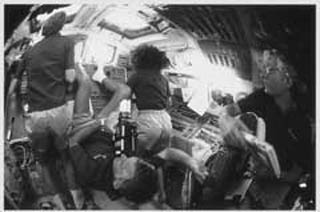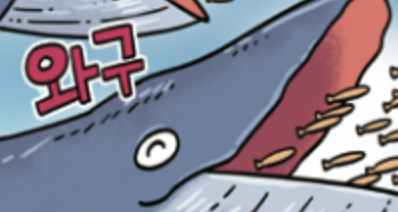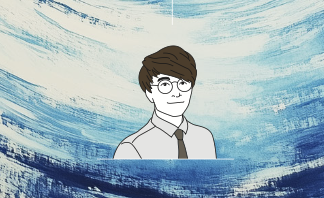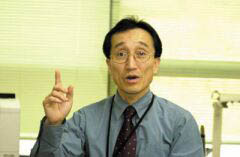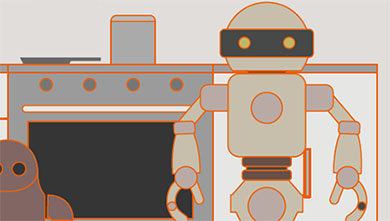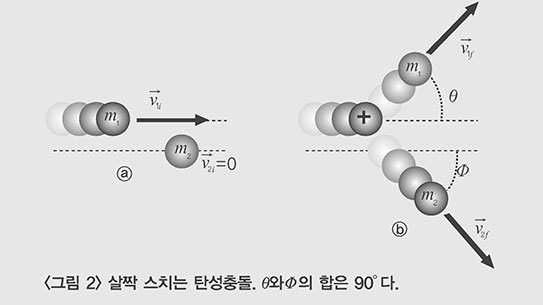지구에 도달하는 태양광선은 모두 평행인가? 우주공간의 중력은 0인가?모든 작용에는 동일한 크기의 반작용이 있는가? 구름 많은 날 그림자가 안보이는 것은 햇빛이 밝지 않기 때문인가? 이 모든 질문들은 우리가 이미 중 고등학교 시절을 거치며 당연한 것으로 알고 있는 사실이다. 하지만 이 사이트의 저자는 이들 문제에 의문을 제기한 뒤 자세한 설명을 곁들여 오류를 지적하고 있다. 이번 호에서 다룰 'Misconceptions spread by K-16 Textbooks'에서는 K-6(미국의 초등교육과정: 유치원(Kindergarten)부터 초등학교6학년까지를 말함)교과서에 나타난 오류들 중 24개의 내용을 다루고 있다. 우리나라의 교과서를 분석하면 얼마만큼 찾아낼 수 있을까 궁금하다. 이 문서의 위치는 http://www.eskimo.com/~billb/miscon/miscon4.html이며, K-6 Textbooks and 'Science myths' in Popular miscon/miscon.html)의 일부이다.
압력에 의해 얼음이 녹기 때문에 스케이트를 탈 수 있는 것이 아니다.
얼음이 압력을 받으면 녹기 때문에 빙상 스케이트는 마찰이 적다고들 하는데, 이는 옳지 않다. 이 현상은 종종 사각형의 얼음조각과 철사, 2개의 분동을 이용한 실험으로 설명한다. 그러나 압력이 얼음의 녹는점에 영향을 준다고 해도, 온도가 섭씨 0도보다 약간 낮을 때를 제외하고는 스케이트 압력은 얼음을 녹이기에 충분치 않다.
얼음조각 실험은 아주 혼돈을 유발할 수 있는 실험이다. 이유는 실험이 항상 따뜻한 방에서 이루어지기 때문인데, 철사로 전도된 방의 온도로 인해 철사가 얼음조각을 녹인다.
작은 물체는 작은 마찰력을 가진다. 하지만 이들은 높은 압력을 만들기에는 너무 작다. 얼음의 낮은 마찰력은 아마도 얼음 표면에 항상 자연스럽게 생기는 수백 개의 분자두께가 이루는 액체층 때문일 것이다.
자연발생 원소는 92개가 아니다.
우라늄의 원소 번호는 지구에서 일반적으로 발견되는 원소들 중 가장 높다. 그리고 몇몇 교과서에서는 지구에서 발견되는 원소는 92개가 있다고 서술한다. 수소(원자번호 1)부터 우라늄(원자번호 92)까지. 그러나 이것은 틀렸다.
유감스럽게도 우라늄 아래의 두 원소는 방사능을 발생시키고, 짧은 반감기를 갖고 있다. 이것들은 테크니튬과 프로메튬이다. 이 두 원소는 자연에서 발견되지 않았고, 이것으로 자연적으로 발생하는 원소의 수는 90개로 낮춰진다.
한편 1970년대에 자연 우라늄 반응기가 고대 아프리카의 강바닥에서 발견됐고, 침전된 광물이 오래된 플루토늄 동위원소의 자취를 함유하고 있다는 것이 발견됐다. 이 사실로 자연적으로 발생하는 원소의 수는 91개로 보완됐다. 물리학 교사지, 27권 4호 2백82쪽 참조.
태양광선은 평행이 아니다.
어떤 책들에서는 물체가 멀리 떨어져 있을수록 그로부터 오는 빛은 거의 평행하므로, 아주 먼 거리에 있는 태양광선은 거의 평행에 가깝다고 한다. 그러나 이것은 그르다. 이것은 태양표면의 한 점에서 나온 빛이 우리 눈에 거의 완벽한 평행으로 도착할 때는 사실이다.
하지만 태양 전체로서의 빛은 그렇지 않다. 태양이 아주 먼 거리에 있지만, 또한 매우 크기 때문이다. 하늘로부터의 빛에서도 유사한 경우가 존재한다. 하늘로부터의 빛이 평행하다고 하지는 않는다. 하지만 그것은 몇 마일 떨어진 곳에서 우리 눈으로 들어온 빛이다.
만약 태양광선이 완벽하게 평행하다면 몇가지 재미있는 결과가 발생할 것이다. 우리가 보는 태양은 아주 밝은 점, 마치 매우 강한 밝기를 가진 별이나 용접점처럼 보일 것이다. 또한 그림자의 가장자리는 흐릿하지 않고 아주 예리할 것이다. 태양이 수평선을 넘어가자마자 순식간에 밤이 될 것이고, 땅에 비치는 먼 산 그림자는 마치 경주를 하듯 길어질 것이다.
낮에는 공기밀도의 변화가 빛의 움직임에 따라 마치 수영장 바닥처럼 그림자가 질 것이다. 일식과 월식 현상은 반영(半影:태양흑점의 반암부 또는 월식에서 UMBRA 주위의 약간 밝은 부분)이 거의 없게 된다. 만약 태양광선이 완벽하게 평행하다면 대형 볼록렌즈로 빛을 둥근 원반모양보다 더 강한 바늘구멍 크기로까지 모을 수 있을 것이다.
또한 소형 오목렌즈를 대형 볼록렌즈 옆에 놓으면, 이 렌즈쌍을 이용해 태양광의 두께를 조절함으로써 위험할 정도로 강력한 평행광을 만드는데 사용할 수도 있다. 그러나 실제로 이 실험을 해보면 크게 투영된 태양면의 상(image)만을 얻을 뿐이다.
우주공간의 중력은 0이 아니다.
다들 우주공간에서의 중력은 0이라고 알고 있는데, 이는 잘못 된 것이다. 우주공간에서의 중력은 0이 아니다. 실제로는 꽤 세다. 만일 당신이 3백마일 높이의 사다리 꼭대기에 올라갔다면 진공상태에 놓이지만, 이것이 무중력 상태는 절대 아니다. 단지 땅에 있을 때보다 15% 정도의 체중감소만이 있을 것이다.
하지만 당신이 올라간 사다리 높이에서는 우주선이 궤도운동을 하고 있을 수도 있다. 아마 거기에 있다보면 우주왕복선이 ‘핑’하는 소리를 내며 당신 옆을 지나가는 것을 볼 수도 있을 것이다. 우주선 안에 있는 사람들은 항상 무중력 상태인 것처럼 보인다. 하지만 사다리 위에 있으면 거의 정상적인 체중을 느낀다. 어찌된 일일까?
우주비행사들이 무중력 상태를 느끼는 이유는 우주선 안에 있는 모든 것들이 낙하하고 있기 때문이다. 만약 우주선이 사다리 끝에 움직이지 않고 걸려있다면(사다리가 매우 튼튼해야겠죠?), 낙하하지 않을테니 그 안의 물체들도 제 무게를 느낄 것이다. 그리고 만일 당신이 사다리에서 뛰어 내린다면 무중력상태를 경험할 것이다(적어도 땅바닥에 떨어질 때까지는!).
그런데 만약 궤도 비행하는 우주선이 정말 추락한다면 왜 땅바닥에 떨어지지 않는 것일까? 이는 우주선이 아래로 떨어지는 것이 아니기 때문이다. 우주선은 떨어지는 방향의 옆쪽으로 매우 빠르게 움직이면서 곡선을 그리며 떨어진다. 우주선이 빠르게 따라 움직이는 하강곡선로가 지구의 곡선과 같으므로, 우주선은 결코 떨어지지 않는 것이다.
우주선 안의 비행사들은 결코 무게가 없는 것이 아니다. 지구는 아주 강하게 그들을 끌어당기고 있고, 그래서 그 방향으로 떨어지고 있다. 하지만 이들이 아주 빠르게 옆쪽으로 움직이고 있기 때문에 계속해서 떨어짐을 모면하는 것이다. 이러한 과정을 ‘궤도선회’라 하며, 여기서 나타나는 무중력을 설명하는 적당한 단어는 ‘자유낙하’다.
우주비행사들이 ‘무중력’ 상태라고 해서는 안된다. 만일 그렇게 한다면 떨어지는 모든 사람, 모든 사물들도 ‘무중력’이라고 해야 하기 때문이다. 책을 떨어뜨리고 무중력 상태라고 할 것인가? 그렇다면 왜 떨어진다고 하는가?
우주비행사들과 같은 자유낙하를 경험하려면 간단히 공기 중으로 뛰어내리면 된다. 하지만 더 나은 방법은 풀장에서 다이빙을 하거나, 스카이 다이빙을 하는 것이다.
ICE SKATES DO NOT FUNCTION BY MELTING ICE BY PRESSURE
It is commonly stated that ice skates have low friction because ice melts when pressure is applied to it. This is not correct. A demonstration using an ice cube, a wire, and two weights is often provided to illustrate the phenomena. However, while pressure does affect the melting point of ice, the pressure provided by the skates is not enough to melt ice except when the temperature is a fraction of a degree below 0℃. The icecube demonstration is very misleading because it is always performed in a heated room, and the wire melts the ice by thermal conduction of room temperature along the wire.
Small objects experience low friction on ice, yet their weight is too small to create high pressure. The low friction of ice is probably caused by a layer of liquid water a few hundred molecules thick which always spontaneously develops on the surface of ice.
THERE ARE NOT 92 NATURALLY OCCUR-RING ELEMENTS
Uranium has the highest atomic number of the elements commonly found in the environment, and some books will tell you that there are 92 elements found on earth: hydrogen (atomic number 1) through uranium (atomic number 92). This is wrong.
Unfortunately there are two elements below Uranium which are radioactive and have extremely short half lives. These are Technicium and Promethium. These two elements have not been found in nature, and this reduces the total number of naturally-occurring elements to 90. However, in the 1970s a natural uranium reactor was found in an ancient streambed in Africa, and the mineral deposits there contained traces of a long-lived Plutonium isotope. This brings the total number of naturally-ocurring elements back up to 91. See THE PHYSICS TEACHER, Vol.27 No.4 p282
LIGHT FROM THE SUN IS NOT PARALLEL LIGHT
Some books state that light from distant objects is nearly parallel, the more distant the object the more parallel the light, and since the sun is so far away, sunlight is perfectly parallel. This is incorrect. While it is true that light from *each tiny point* on the sun′s surface is just about perfectly parallel by the time it reaches our eyes, light from the sun as a whole is not. This is because the sun, though very distant, is very large. A similar situation exists with light from the sky. We wouldn′t say that the sky gives parallel light, yet it′s light comes to our eyes from many miles away.
If sunlight were perfectly parallel, there would be some interesting effects: the sun to us would look like a very bright point, like an intensely bright star or a welding arc. Also, shadows on the ground would lack penumbras and be almost perfectly sharp. Night would fall quickly as the tiny point-like sun fell below the horizon, and the advancing shadows of distant mountains would be seen to race across the ground. During the day the variations in air density would cause the ground to be covered by moving patterns of light, patterns similar to those seen on the bottom of a swimming pool but in this case made by variations in air density. Solar and lunar eclipses would lack penumbrae. And if sunlight was perfectly parallel, a large convex lens could concentrate sunlight into an intense pinpoint rather than into a small disk.
Also, a if a small concave lens was placed near the focus of a large convex lens, the pair lenses could be used to concentrate sunlight and form it into a thin, dangerously powerful parallel beam. Try to do this with the real sun, and all you get is a large, projected image of the sun′s disk.
GRAVITY IN SPACE IS NOT ZERO
Everyone knows that the gravity in outer space is zero. Everyone is wrong. Gravity in space is not zero, it can actually be fairly strong. Suppose you climbed to the top of a ladder that was 300 miles tall. You would be up in the vacuum of space, but you would not be weightless at all. You′d only weigh fifteen percent less than you do on the ground. Yet spacecraft can orbit at the height of your ladder! While you′re up there, you might see the Space Shuttle zip right by you. The people inside it would seem as weightless as always. Yet on your ladder, you′d feel nearly normal weight.
What′s going on?
The reason that the shuttle astronauts act weightless is that they are all inside a container which is FALLING! If the shuttle were to sit unmoving on top of your ladder (it′s a strong ladder,) it would no longer be falling, and its occupants would feel nearly normal weight. And if you were to leap from your ladder, you would feel weightless (at least until you hit the ground!)
So, if the orbiting shuttle is really falling, why doesn′t it hit the earth? Because the shuttle is not falling down, it is moving very fast sideways as it falls, so it falls in a curve. It moves so fast that the curved path of its fall is the same as the curve of the earth, so the Shuttle falls and falls and never comes down. The astronauts in spacecraft are never “weightless,” the Earth is strongly pulling on them so they fall toward it. But they are moving sideways so fast that they continually miss it. This process is called “orbiting,” and the proper word for their seeming weightlessness is called “Free Fall.” You shouldn′t say that astronauts are “weightless,” because if you do, then anyone and anything that is falling would also be “weightless.” If we drop a book, should we say it becomes weightless? If so, then why does it fall?
So to experience GENUINE free fall just like the astronauts, simply jump into the air! Better yet, jump off a diving board at the pool, or go skydiving.
